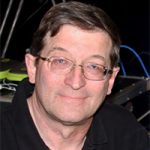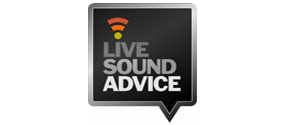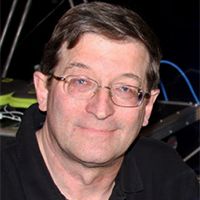One of the most common complaints I get while teaching live music mixing is that the band is too loud on stage.
You all know the drill… Every musician on stage keeps turning up their stage amps and hitting the drums even louder to try to hear their own instruments. Of course, the engineer now has to turn up the floor wedges in an attempt to allow the singers to hear themselves.
So there’s this constant battle to the top in terms of SPL level on stage, which then spills into the audience. Pull the vocals and instruments out of the main loudspeakers to get the levels in the room down to an acceptable level only to hear the monitors bouncing off the wall behind the band. It’s not pretty.
In fact, it’s probably still too loud. I’ve measured the SPL of the stage wash many times in rooms with the main PA turned off, and it often exceeds 100 dB SPL in the audience area. To actually “mix” properly, we need to get at least 5 to 10 dB above the noise coming from the stage, which forces 105 to 110 dB SPL for the room.
While this might be (arguably) fine for a club or shed, it’s very problematic for other applications like worship services and wedding receptions where the band isn’t supposed to be the center of attention.
Not to mention that a steady diet of 100-plus dB is a sure way to wreck your hearing. And nobody really wants that.
Necessity, Invention
First let me confess that I’m a musician of over 50 years who used to play in really loud bands in the 1960s and 70s. Yes, we did the Marshall and SVT amp thing with big-banging drummers and practiced at 110 to 115 dB SPL. Everyone in every band I knew was doing it, and there seemed to be no way out of the situation.
However, I had the advantage of being a mechanical engineer studying for an electrical engineering degree. That and I had a few engineering buddies who were home audio fanatics. So I took everything I knew about live performance sound and started inventing ways to turn down the volume on stage so it could be controlled in the room.
Was it easy? No! Did the musicians in my band like it at first? What do you think? I lost a number of them until I figured out how to make it work. But after a few years of designing, building, and experimenting, the semi-silent stage was born. And this was in the late 1970s when you were dubbed a wimp if the volume wasn’t peeling paint off the walls.
I found that by keeping the sound level spilling from the stage down to about 85 dB SPL, we could cover the room very well at between 90 to 95 dB SPL (A-weighted/slow) – while still feeling what we were playing on stage. Plus we soon found that we could hear everything being played. This eventually led to better musicianship, better singing, and a generally better performance.
It had now become a performers’ “dream stage” that an engineer could relatively easily turn into a quality room mix, and at any level desired. If we wanted 90 dB SPL in the room, it was 90, and if 100 or 110 dB was wanted, we could do that as well. Regardless, the 85 dB level on the semi-silent stage remained since it was really comfortable in terms of both playing and hearing.
Back To The Future
Fast forward to the present and we find that many stages, both club and worship, have resorted to IEMs (in-ear monitors) to reduce stage volume. While this works, it really requires an excellent monitor engineer to make it playable for musicians.
I’ve talked to hundreds of players about this, and the consensus has been that unless it’s an A-list band with dedicated monitor consoles and personnel, it’s just not that fun to play with IEMs. Yes, it may be required and the musicians may even get used to it, but it’s hard to beat the freedom and musicality of playing on a live stage with reasonable monitoring levels where everything can be heard.
Again, I know this can be made to work because we did exactly that back in 1978.
This article is the first in a multi-part series that will explore the various technologies and techniques to create a semi-silent stage in a venue, providing nearly any stage SPL desired. I chose 85 dB back in the day, but the concept can be used to create a 75 dB, 80 dB or even a 90 dB stage. The choice is up to the musicians and engineers as to how much volume they can tolerate spilling from the stage.
Back in the 1970s, I had to design and build DI boxes, power soaks and mini-monitor wedges to achieve this because those things didn’t yet exist. The process took a few years and many hundreds of hours to make happen.
But now we can buy everything off the shelf from dozens of great manufacturers and make our own semi-silent stage happen in a matter of a few weeks. It’s just a matter of putting it all together in the right ways that will make musicians happy when performing on stage while keeping the audience happy when listening in the room.
Following The Process
So I’m recreating a rock band from the 1970s, but with modern sound gear. With my band’s original guitar player, Karl Shrader, we’ll be demonstrating how to set up an extremely playable 85 dB stage with enough options to make virtually any musician happy.
We’ll also be integrating a variety of musicians and their “loud” instruments into the mix as well, which will further help us figure out possible solutions to help turn down the SPL of your band and/or praise team. Fun will be had by all as we experiment and demonstrate how to reduce stage volume while turning up the musician enjoyment quotient.
Kicking things off in my next article on this subject, we’ll explore the following topics:
– Why do musicians want to play loud?
– Why do musicians get upset when they’re asked to turn it down?
– How can we convince musicians to try new things such as smaller amps, monitors, and so on?
– How do we best choose what actually goes into what monitor mixes?
– Why, specifically, does turning down the monitors make musicians turn up their stage amps?















